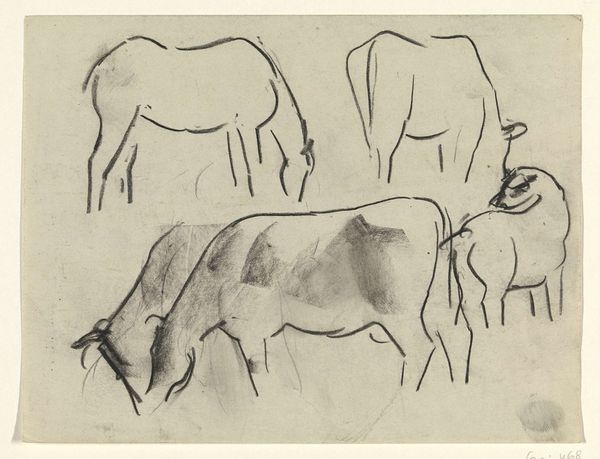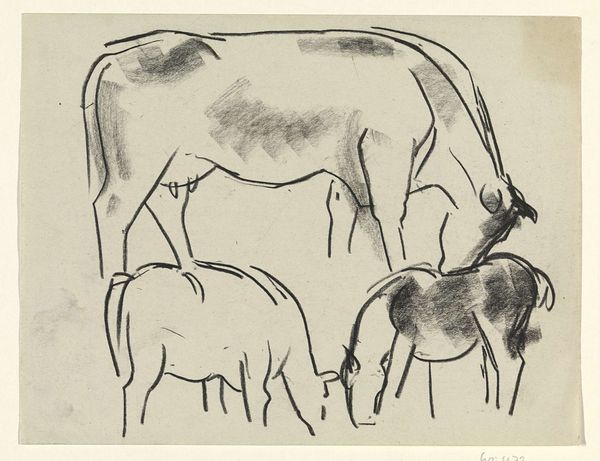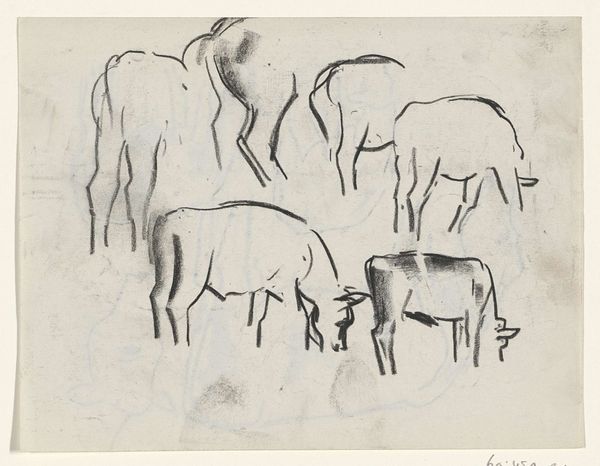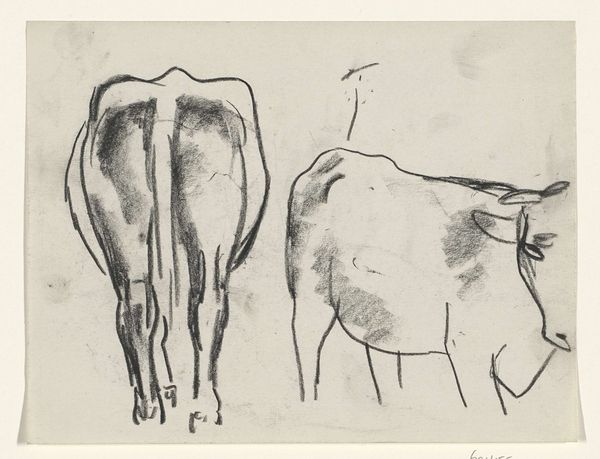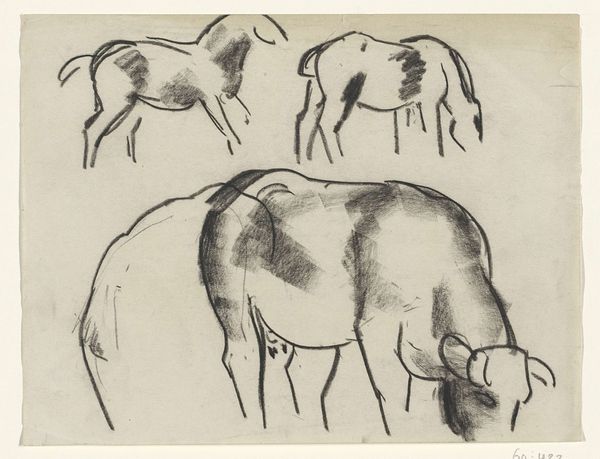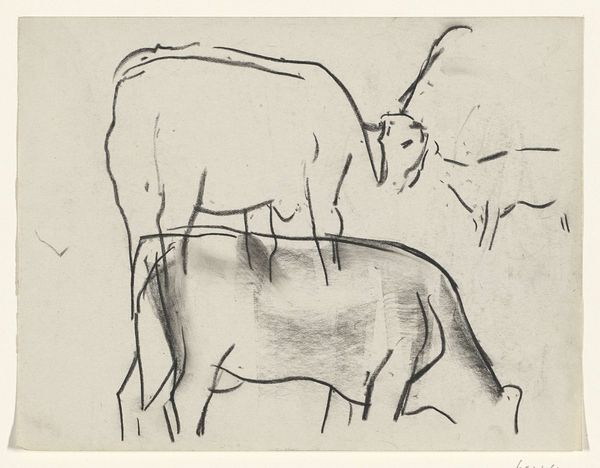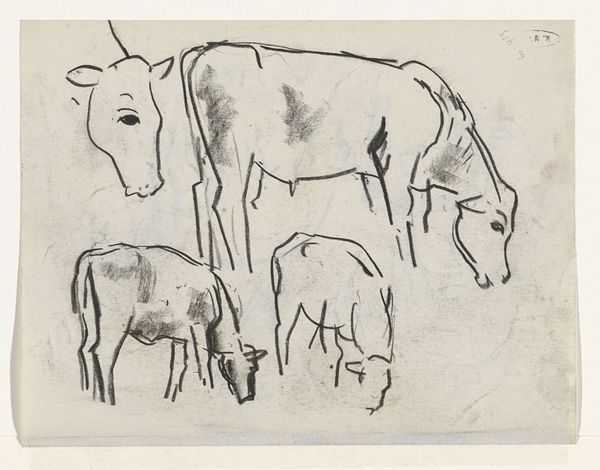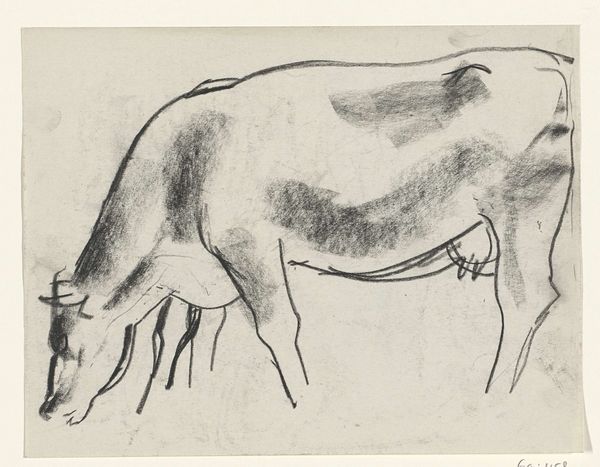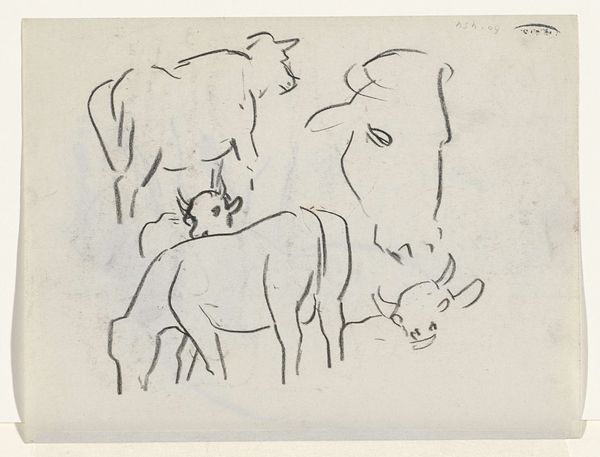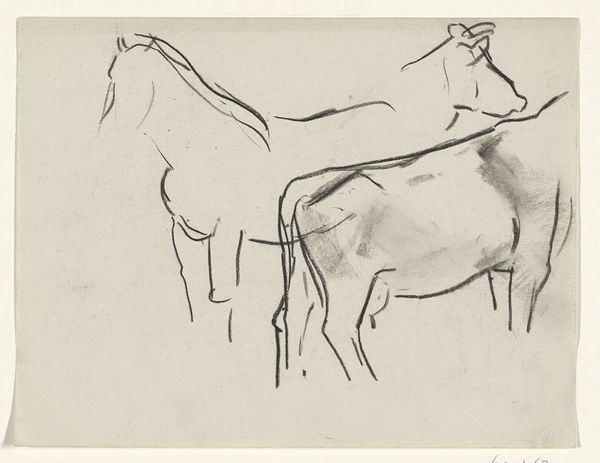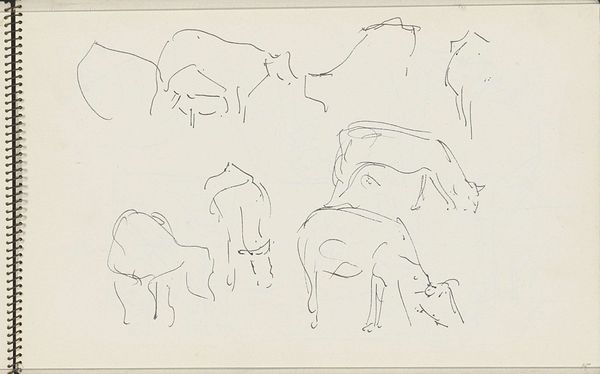
Dimensions: height 137 mm, width 202 mm
Copyright: Rijks Museum: Open Domain
Curator: This is Leo Gestel's "Vier grazende koeien," created sometime between 1891 and 1941. It's a study, really—a drawing in graphite and pencil now held in the collection of the Rijksmuseum. Editor: Immediately, I see the interplay between negative space and the stark lines of the composition, an exploration of form reduced to its absolute essentials. Curator: Gestel was grappling with impressionism here. We see a realism grounded in keen observation, yet simplified. Editor: True. Note the quick, almost hurried, strokes capturing the essence of each cow. Each mark delineates not just the form, but also the weight, the volume, the presence of the animal. There's an underlying semiotics here; the reduction communicates volumes. Curator: Consider too the setting in the late 19th century, early 20th. There was burgeoning industrialization in Europe, this work might have served as a counterpoint celebrating rural, pastoral life and, certainly, an important Dutch trade and symbol. Editor: The cows feel both individualized and anonymous, icons. Notice that one almost fully realized dark shape? The variation, along with placement, emphasizes a spatial dynamic across an otherwise very shallow picture plane. Curator: Right. In its own subtle way it participates in the aesthetic and intellectual discourse of its time – between Realism and modern movements toward pure abstraction. There is certainly historical significance here. Editor: Looking again at the composition, you know it’s remarkable how much information he manages to convey with so few lines, creating that effect in how that information is being arranged spatially. This emphasis exemplifies formalism in its purest. Curator: Thinking about Gestel’s oeuvre as a whole, these preparatory works allow insight into how academic methods become the foundations for his later avant-garde experimentations and how important the sociohistorical element really plays out here in this body of work. Editor: I still get drawn into those sparse strokes and planes that render light. What better way to observe those essentials, I wonder.
Comments
No comments
Be the first to comment and join the conversation on the ultimate creative platform.
